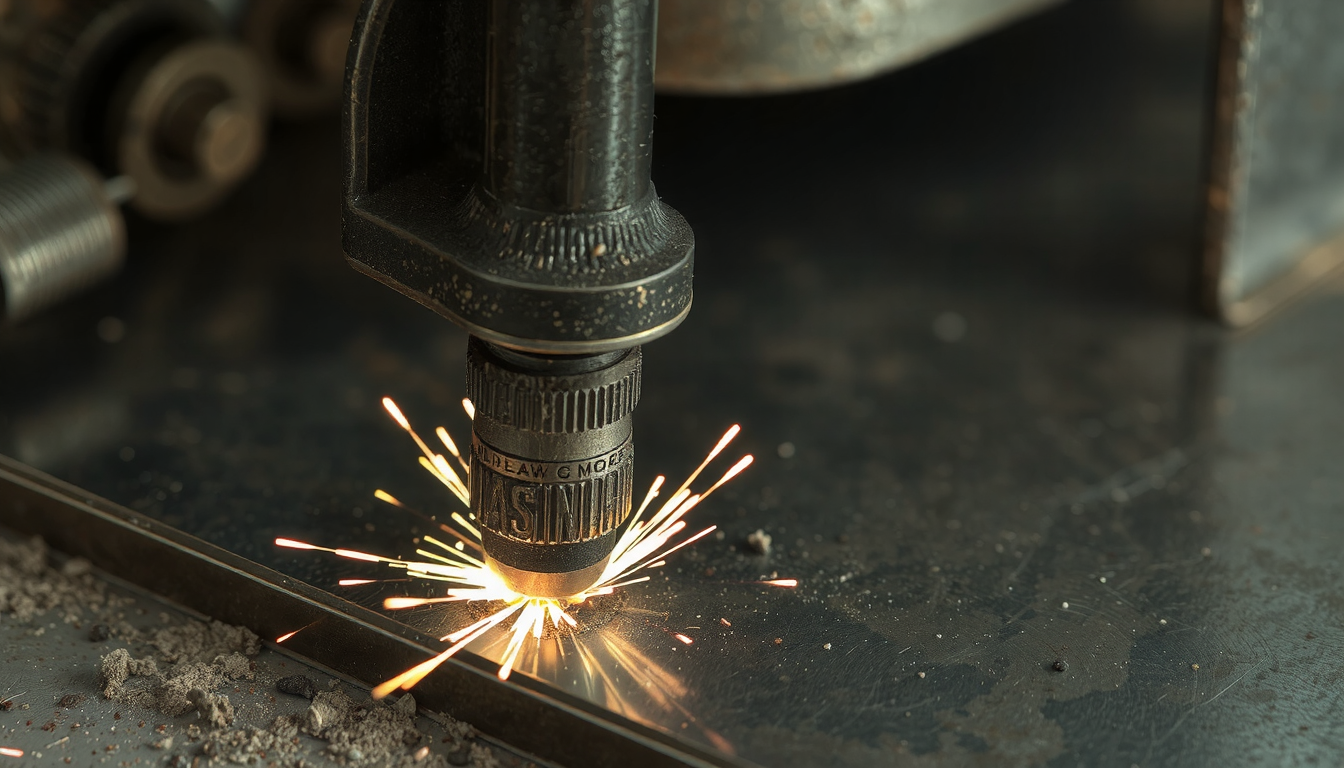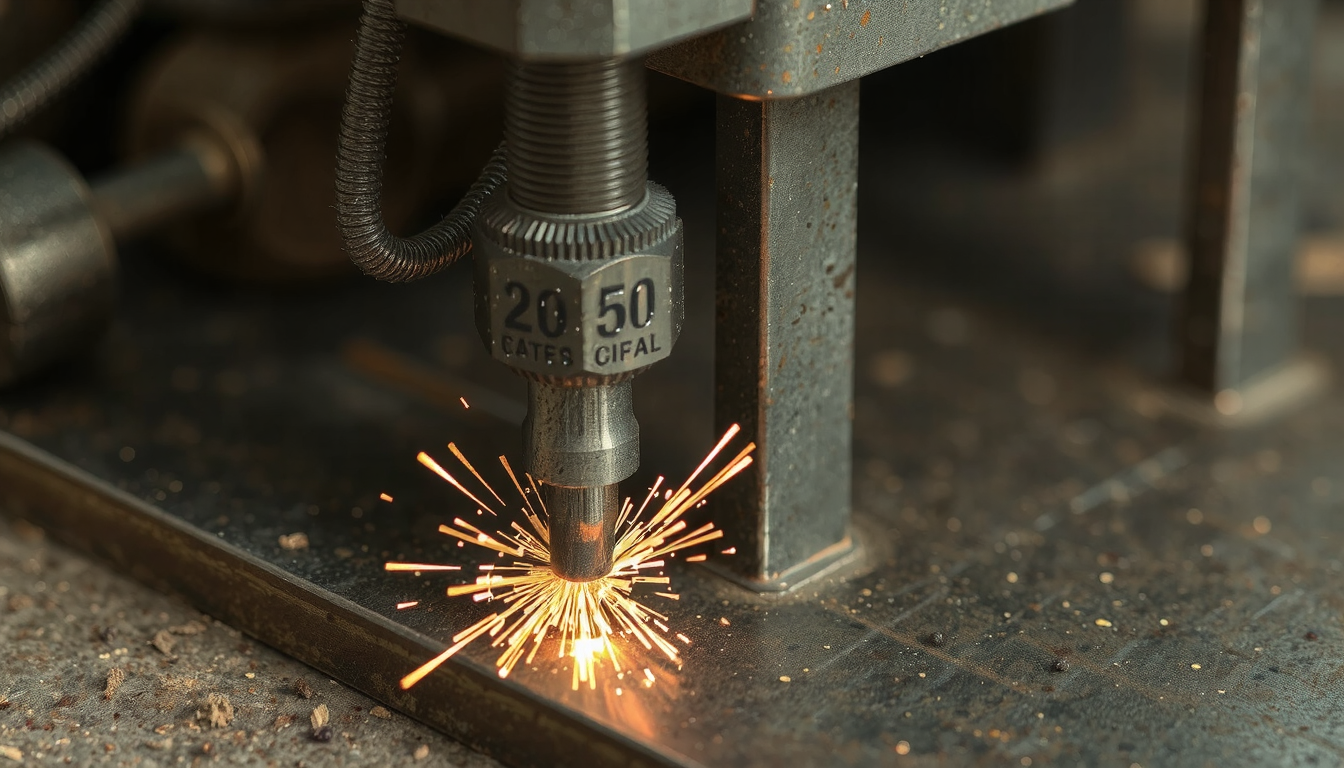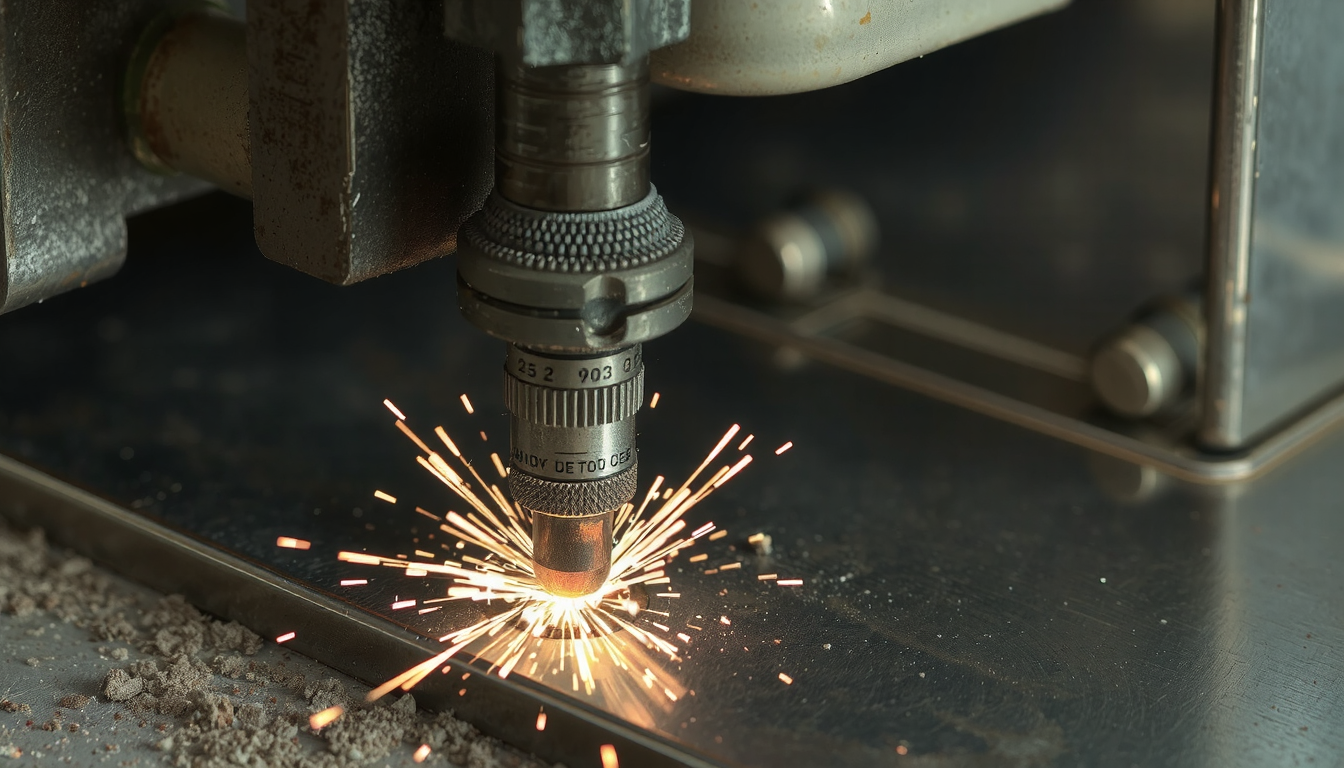Metal stamping is metal sheet molding that is done by way of force. The term “tool stamping metal” can be used in two different contexts. One meaning relates to large industrial machines that are able to manufacture thousands of parts. The other meaning refers to basic tools that are used to create custom-made jewelry.

In fact, these two areas have very different standard tools. One of them uses conventional fly wheels, high-speed punch presses, and costly hard-to-find machinery which can go up to several thousand dollars. The other one only needs a hammer and small metal like a coin. This guide is structured for both. We will examine cutting tools for industrial mass production and kits for artistic crafts.
Metal Stamping Explained: A Brief Overview
Metal stamping is a cold-formed operation. This means no heat is used when the metal is shaped. The fundamental concept is quite uncomplicated. Either a press or a hammer is used to apply a high strength force on the metal sheet.
This strength compresses the metal against a specially formed tool called a die. The die acts like a mold. It cuts or shapes the metal according to your design. The whole process involves several techniques. These include blanking (cutting out a shape), bending, coining (making detailed surfaces), and piercing (punching holes).
Properly Understanding the fundamentals of metal stamping ensures obtaining good outcomes. Whether it is a car door or a small charm, the principle is the same. You apply force with the help of a tool to shape the metal.
The Two Types of Stamping: Industrial vs. Hand Tools
The expression “tool stamping metal” creates two diverging paths. One is the factory route. The other one is the craft table route. Knowing the distinction helps you get the right information.
Industrial tooling belongs to the realm of mass production. It emphasizes the fast and precise production of identical parts. Hand-stamping tools are for art and personal items. They allow for making unique, one-of-a-kind pieces. These are totally different in goals, costs, and skills.
A simple comparison is provided below:

| Característica | Industrial Tooling | Hand-Stamping Tools |
|---|---|---|
| Primary Goal | Mass Production, Precision | Personalization, Artistry |
| Key Tools | Stamping presses, progressive dies | Steel stamps, hammer, bench block |
| Scale | High-volume (thousands to millions) | Low-volume (single pieces) |
| Coste | Very high (thousands of dollars) | Low (kits under $100) |
| Required Skill | Engineering, machine operation | Manual skill, artistic eye |
Deep Dive: Industrial Tool Stamping Metal for Mass Production
The aim of manufacturing is to produce many identical parts. Industrial tool stamping metal is the process that makes this possible for everyday gadgets. This includes parts for cars and electronic components.
The Press and Die: Two Critical Parts
Two principal parts are responsible for all the work. They are the stamping press and the tool and die set.
The stamping press is a device that delivers the force. Presses can be mechanical or hydraulic. They exert pressure to set up the desired configurations even in tough metals.
The tool and die set is the custom “mold” for the part. It is made of hardened tool steel. This part is intended only for one specific part. The metal sheet is installed between the two halves of the die. The press closure results in the die shaping and cutting the metal into the finished design.
The Primary Types of Industrial Tooling
Not all dies are the same. The specific design tool stamping metal depends on the complexity of the part and the desired quantity. Various types of metal stamping tooling are available, each with its own uniqueness of advantages.

- Progressive Dies: These are very intricate tools. A coil of metal feeds through a die fitted with multiple stations. Each station performs a different operation such as cutting, bending, or punching. The finished part is produced with each stroke of the press.
- Compound Dies: These dies perform multiple cutting functions at one stroke. They can punch a hole and also cut the outside shape of a washer at once. They work well on simple, flat parts.
- Transfer Dies: Here, the first step is to cut the part from the sheet. After that, mechanical “fingers” move the part between die stations. This is suitable for large parts that cannot be connected to a metal strip.
The Precision Aspect in Tool and Die Making
The quality of a stamped part is a direct result of the quality of the die. If the die is not precise, the finished products will not be perfect either. Therefore, tool and die-making require highly skilled engineering.
Modern tools are designed using Computer Assisted Design software CAD. It is the most precise design alternative. Making the physical tool from these plans goes with the state of the art manufacturing. For parts that have to be made to specification, processes like Servicios suizos de torneado CNC are often engaged. Also, a good Servicio de torneado CNC is necessary for manufacturing robust and precise parts that come together to create a stamping die. Each surface and angle needs to be ideal.
Basic Tooling: Hand Stamping Metal 101
If you are planning to make jewelry or personalized gifts, you will need a different tool set. Hand stamping metal is a very creative and enjoyable craft that you can easily do. Your starting budget is low and you can begin creating right away.
Your Beginner’s Toolkit: What to Buy
You will need a few essential items to get started. There are many Metal stamping tools and supplies for jewelry available online as well as in craft stores. Here is your main shopping list.
- Steel Stamp Sets: These are the Most Crucial Tools. They are steel rods with a letter, number, or design carved on the end. Start with a basic alphabet set.
- Stamping Hammer: A 1lb or 2lb brass hammer works best. Brass is softer than your steel stamps. This helps prevent damage and gives a good impression.
- Steel Bench Block: This is a small, heavy block of steel. It provides the solid, flat surface you need for a clean impression when you strike the stamp.
- Stamping Blanks: These are the metal pieces you will stamp on. They come in many shapes and sizes like circles, hearts, and rectangles.
- Optional but Helpful: Stamp guide tape helps you stamp in a straight line. A black enamel marker can darken the stamped letters to make them stand out.

Deciding on the Right Metal Blanks for Stamping
The metal type you choose is really important. For a starter, work with soft metals. They are easy to stamp and require less force.
Aluminum, pewter, and copper are good metals to begin with. These metals accept an impression quite easily. This promotes your self-belief. From the beginning, avoid hard metals like stainless steel. It is tough to stamp and could be a source of frustration for novice crafters.
Your First Project: Stamping a Metal Keychain
Theory is great but practice is far superior. Let’s step through a simple project to illustrate how stamping metal tools intermingle. This easy-to-follow guide will help you to create your first personalized keychain.
- Prepare Your Workspace: Look for a sturdy workbench or table. Then, place the steel bench block on the surface. A solid surface is key. A wobbly table will absorb the hammer’s impact.
- Position Your Blank: Center your round or rectangular keychain blank on the steel bench block. If you want to stamp a straight word, place a piece of stamp guide tape across the blank.
- Your First Strike: Get the first letter stamp for your word. Hold it firmly with your thumb and fingers. Position the tip flat and perpendicular to the blank. One powerful strike with your hammer is better than several little taps. The weak taps can make some image “ghost” appear.
- Repeat for All Letters: Continue this process for each letter in your word. Get a feel for the gaps between the letters. You could practice on a scrap piece of metal first to feel the force needed.
- Darken the Impression: Use a fine-tip black permanent or enamel marker. Scribble over the stamped letters until they are filled in. Allow it to sit for a minute.
- Assemble Your Keychain: Use a polishing cloth or paper towel to wipe away excess ink from the surface of the blank. The ink will fill the stamped impressions but the surface will be clean. Finally, attach your stamped blank to a key ring.
Conclusion: The Right Tool for Every Stamping Job
We have discussed the two different areas of metal tool stamping. One is a production facility that deals with high stakes. Precision dies are capable of making millions of identical pieces. The other is the creative designers desk. Simple tools yield a one-of-a-kind art.
The understanding of the difference is the first step. The choice of the proper stamping tool for metal is essential to the success of your project. This is true whether you make a million car parts or a single handmade necklace.
Incorporating an industry partner that has design experience in precision manufacturing is key to completing large, intricate industrial projects. Mekalite is a company that possesses in-depth knowledge of the high-tolerance manufacturing processes which make the quality tool and die values possible.
Frequently Asked Questions (FAQ)
What is the best metal for a beginner to practice stamping on?
Soft and affordable metals are the best for newbies. Aluminum, pewter, and copper are great options. These metals leave easy impressions without the need for too much pressure. It is best to avoid starting with stainless steel. It is tough and can be quite off-putting.
Can I reuse an industrial metal stamping die for a different part?
In general, no. Industrial stamping dies come as custom tools manufactured with a very high degree of precision for a single part. In many cases, replacing a complex progressive die is more costly and less efficient than making one from scratch.
What kind of hammer do I need for hand stamping metal?
A brass hammer of 1 lb or 2 lb is ideal. Brass is softer than steel stamps. This helps protect your tools and provides a solid strike. A standard steel hammer from a toolbox will work, but it probably will damage your stamps over time.
What is the difference between metal stamping and metal engraving?
Force is used in metal stamping to push the metal out of place. A stamp and hammer push down on a surface to make an impression. Metal engraving, on the other hand, removes material from the surface. A sharp tool or laser machine cuts the metal to form a design.
How are the tools for stamping metal, like dies, actually made?
The manufacturing of industrial stamping dies is through a meticulous engineering process. It all starts with a CAD computer design. Next, expert craftsmen use modern machines like CNC mills and grinders to shape the hardened tool steel. The parts are assembled and undergo testing to produce the final die.

